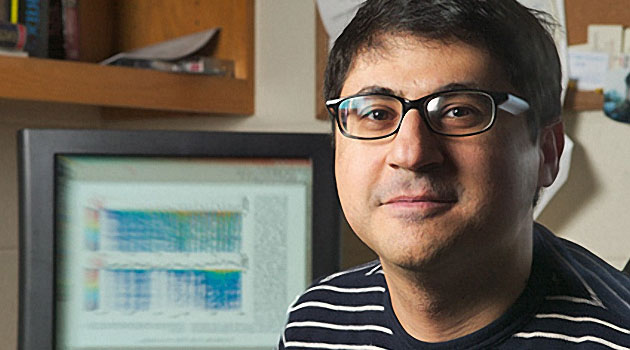Infectious diseases are literally a moving target, with their incidence waxing and waning over time and the pathogens themselves constantly mutating and evolving.
Traditionally, the study of infectious diseases has taken two distinct routes, with epidemiologists focusing on quantifying disease outbreaks while researchers in fields such as microbiology and genetics have concentrated on the infectious agents themselves and the mutations they undergo.
UGA ecologist Pejman Rohani said understanding both aspects of infectious diseases is critical to revealing the complex dynamics that drive epidemics such as dengue fever and is working to combine the traditionally separate fields of study.
With a fellowship from the John Simon Guggenheim Memorial Foundation, Rohani aims to develop a model that will describe how genetic differences among the four related serotypes that cause dengue fever – a potentially deadly mosquito-borne illness – influence outbreaks in humans. Rohani, associate professor of ecology and UGA Center for Tropical and Emerging Global Diseases researcher, points out that the incidence and geographic range of dengue are increasing, underscoring a critical need for a better understanding of what drives outbreaks.
“Dengue is a reemerging infectious disease – the epidemics are becoming more frequent and more severe,” said Rohani, who is co-author of the book Modeling Infectious Diseases, scheduled to be published in October. “So it’s important that we understand the mechanisms that are responsible for generating these epidemics.”
According to the Centers for Disease Control and Prevention, there are an estimated 50 to 100 million cases of dengue fever every year. The agency notes that there are several hundred thousand annual cases of the more serious dengue hemorrhagic fever, which has an average fatality rate of five percent. The incidence and range of dengue fever is increasing as global warming allows the mosquito responsible for its spread to increase its range. Population growth in developing nations is adding to the problem by pushing more people into substandard housing in mosquito-infested areas. The ease of travel plays a role in the spread of dengue as well, with 100 to 200 suspected cases of dengue being introduced into U.S. each year by travelers.
In a study published last year in the journal Proceedings of the National Academy of Sciences, Rohani and colleague Helen Wearing created a model that demonstrated how a brief period of cross-immunity conferred by any one of the four serotypes causes the boom and bust cycles of dengue epidemics.
Within each of the four serotypes, however, there are several different strains, with mutations continually giving rise to new strains. Using data on past outbreaks and genetic analyses of the subtypes and strains involved, Rohani aims to explain how the replacement of existing strains with new ones influence the severity and frequency of outbreaks.
In a later phase of his research, Rohani hopes to use insights gleaned from his model to explore how best to implement vaccination programs to reduce the spread of the disease. His work is still in its earliest stages, however, and at this point the goal is to create a framework that will better illuminate the complex dynamics of dengue.


